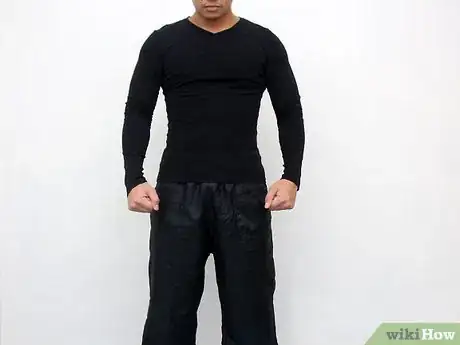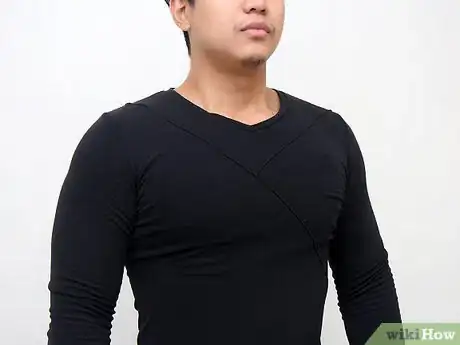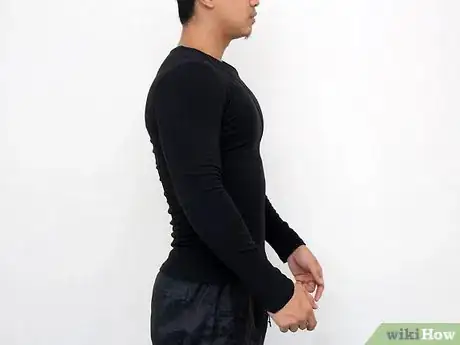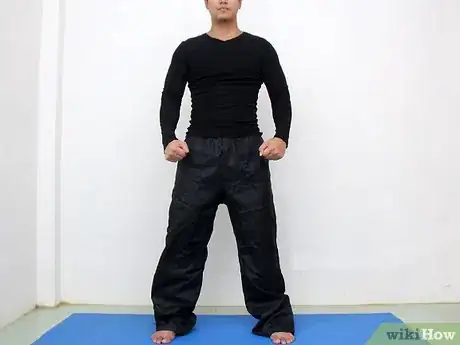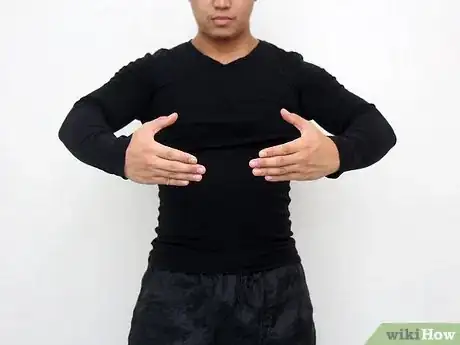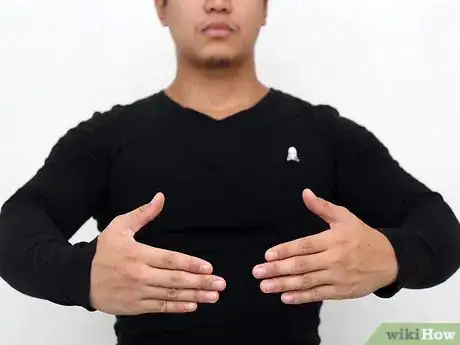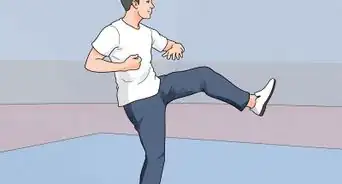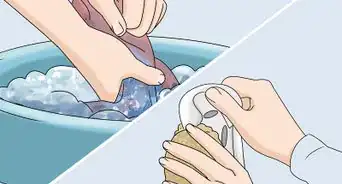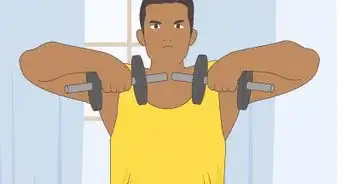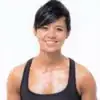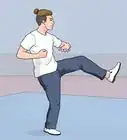This article was co-authored by Yvonne Mo. Yvonne Mo is a Fitness and Health Coach and Kung Fu Instructor. With more than 21 years of fitness industry and martial arts experience, she specializes in combining and teaching eastern and western fitness and health modalities, which include Tai Chi, sports acupuncture, Chinese medicine, and fire cupping. Yvonne received her Personal Trainer Certifications through both the National Strength and Conditioning Association and the American College of Sports Medicine.
This article has been viewed 26,233 times.
This article will show you how to do basic-advanced qigong that will develop internal strength and increase martial power. Though easy to perform these exercises are immensely effective.
Steps
Empty posture
-
1Stand normally with feet shoulder width apart. Your arms will rest normally at your sides. Close your mouth with your teeth touching and curl your tongue up until it touches the soft part of your palate. Have your knees slightly bent.
-
2Breathe in through your nose and expand your abdomen. Do not breathe into your chest. If it helps, take one hand and place it at about the level of your navel. Inhale and feel the breath filling this area (actually it is your diaphragm expanding).Advertisement
-
3Exhale. When your breath is full, exhale and let the abdomen contract to its original position. Relax the entire body using only enough tension in the muscles to keep your posture. Standing in this posture for a long duration will cause muscle fatigue in various body parts but that will disappear over time. Make sure that your shoulders are not too far forward or backward but in a natural position. Look straight ahead and concentrate on a point on the wall, or in the distance if you are standing outside.
-
4Continue to breathe at a normal pace, inhaling and exhaling as previously described. Mentally take note of parts of your body that develop tension and try to evacuate the tension. You can do this by slightly moving the body part or shaking it by moving the body part or the waist. Continue to breathe normally for about five minutes while holding this posture. Check your posture making sure that you are not leaning too far forward or that your head is tilting forward or backward.
-
5Feel the change. Your arms will begin to feel heavy as the chi begins to circulate through your body. There are many sensations that will occur and they can be different for any person. They include: Tingling in various body parts, warmth in particular parts of body. twitching of appendages, chills, and nerve sensations. Do not be alarmed at these––they are good signs and indicate that chi is flowing normally.
Empty posture with arms raised.
-
1Stand normally with your feet shoulder width apart. Close your mouth with your teeth touching and curl your tongue up until it touches the soft part of your palate. Keep your knees slightly bent.
-
2Raise your hands to where they are in front of your chest. The palms will be facing your chest and your elbows will be pointed directly at the ground with the forearm and upper arm assuming an angle of 90 degrees or slightly more.
-
3Breathe air in through your nose and breathe deeply, expanding your abdomen. Do not expand your chest. If it helps, place a palm on your abdomen about the level of your navel and feel the air expand into that area (actually it is the diaphragm muscle expanding). After you have the rhythm, bring the hand back up to the level of the other. Your shoulders should be slightly curved forward but not creating tension. Your head should be at a natural position with your eyes concentrating on a point on the wall or an object in the distance if you are outside.
-
4Hold this posture for many minutes. Your shoulders will begin to hurt. That's normal. You will also feel your hands getting warm and feeling pressure in them as if they are being filled with water. You will feel the chi circulate in your body. Many parts will begin to twitch and you might feel tingling sensations or trembling sensations. All these are normal experiences.
